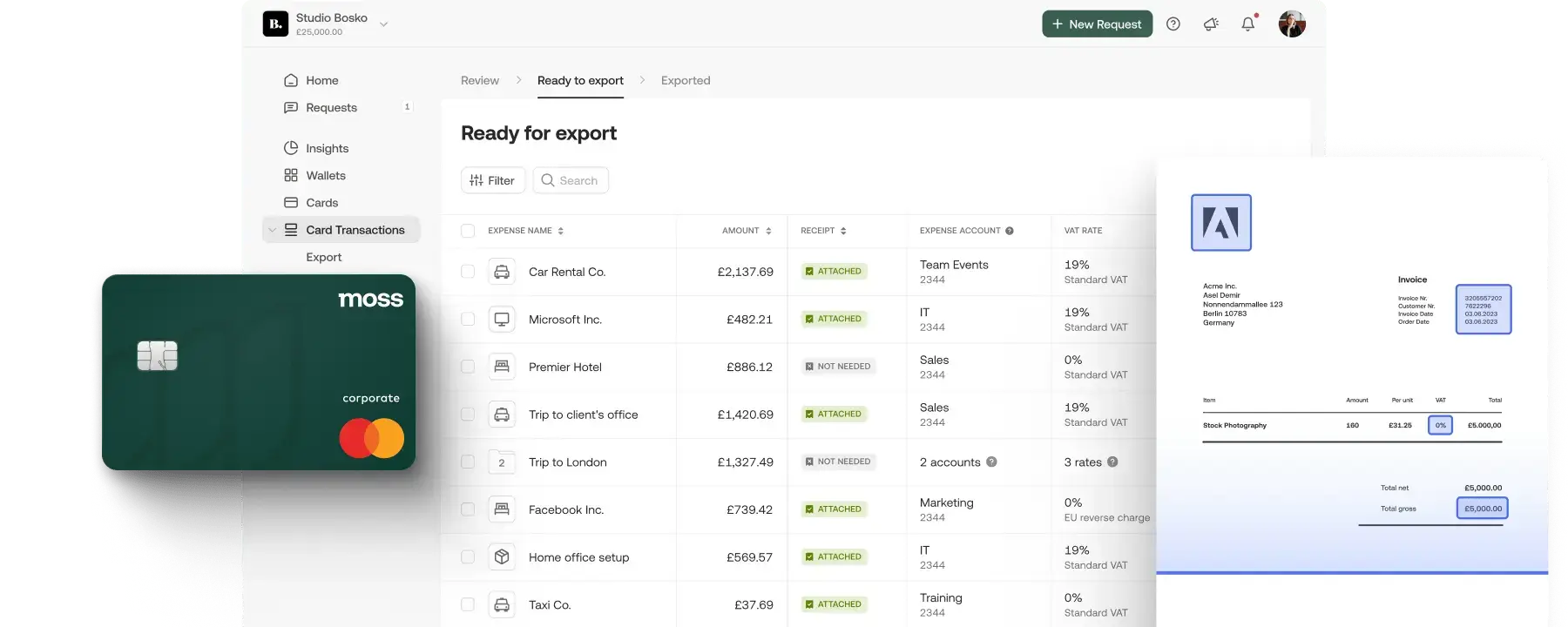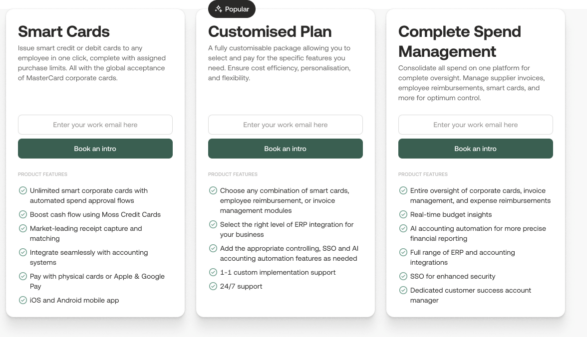Here is a fun fact: Every business can profit from smart budget planning. You might have guessed that already, but reality shows that many companies tend to overspend or forecast their expenses insufficiently. An easy way to change that is by adapting the budgeting method. Bottom-up budgeting, for example, can help avoid typical problems. But what does the term mean, and which pros and cons come with it? We have summarised the most important facts.
What Is bottom-up budgeting?

The bottom-up approach to budgeting is a common technique for coming up with a smart budget plan that enables growth but prevents overspending. Bottom-up refers to the idea of working your way from low departments up to the top level of the company. Every department has to create a budget by considering typical costs to do their job according to the organisation’s requirements and plans. This budget is then reported to senior management or the CFO for approval and allocation.
The overall budget is compiled out of all department budgets and then comprehensively reflects what a company needs within the upcoming financial period. The forecasted budget can contain the following:
- Planned projects for the upcoming financial period
- Wages
- Training
- Travel expenses
- Supplies and equipment
- Administrative costs
As team leads usually have greater insights into what is needed on a daily basis, as well as for projects in the upcoming weeks and months, bottom-up budgeting is preferably used to build a strategic financial plan. Moreover, it frees senior-level employees, the finance department or the CEO of the budgeting burden. As we all know, it is impossible to make everyone happy, especially so if a company has limited funding and needs to find ways to cut costs quickly.
Bottom-up budgeting vs zero-based budgeting
Bottom-up budgeting can be done in several ways. One of them and probably the most popular method is zero-based budgeting. As the name suggests, every department manager needs to start from scratch, adding every forecasted expense, including staff wages. This helps top-level managers to gain valuable insights and let team leads evaluate the actual necessity of costs. With zero-based budgeting, all expenditures that are not crucial to the company’s work can easily be eliminated, as every expense needs approval.
This approach is often used when there is an urgent need to cut costs within the company. On the downside, this time-consuming process can take up many resources, which is why it is commonly used only sporadically to re-think costs and improve the budget.
Participative budgeting
Another way to come up with a budget plan is by using the participative budgeting approach. It requires lower-management employees to compile financial demands for their managing directors. This bottom-up budgeting method can include more people as team leads can involve trusted workers to deliver input. To keep subsequent efforts short, supervision in the process is highly recommended. Participation in budgeting usually is highly appreciated. The company show its respect and reduce micromanaging, which can improve the overall working atmosphere.
Top-down vs bottom-up budgeting: what Is the difference?

The opposite of bottom-up is called top-down budgeting. Here, instead of lower-level management, senior managers are in charge to determine the amount of money that will be allocated to each department. Decision-making from top to bottom—with lower management and junior employees at the end of the chain. Prior experiences, as well as corporate funds, play a significant role in this budgeting approach. If management believes that a department was working over budget in the last few years, they might receive a smaller amount from now on.
It helps save the company a lot of time and money as the overall budget can be forecasted rationally and in accordance with business-oriented decisions. However, this might not always match the actual situation and can hurt the department’s development, especially when a business is trying to grow. Studies have also shown that top-down budgeting negatively affects lower-level management due to a lack of responsibility and inclusivity.
The bottom-up budgeting process, on the other hand, empowers employees to get involved early on. Wishes can be communicated to senior management and if the reasons for a higher budget are convincing, approval can be easier than having to convince the people in charge in a top-down budgeting process where decisions have already been made.
Finding common ground with negotiated budgeting
With negotiated budgeting, companies can combine top-down and bottom-up budgeting approaches. Executives clarify the company’s main targets or set a maximum budget, and then hand over responsibility to managers and employees. Then they are responsible for figuring out how to hit those targets without overspending.
At the same time, this method leaves room for negotiation and adaptation. The final budget can include additional wages for extra staff or a flexible budget for spontaneous projects. It can be a great motivational boost for employees to know that their opinion makes a difference in the company.
How to create a bottom-up budget plan
Creating a bottom-up budget is not hard if you know how to start. These are the most crucial steps that can help businesses on their journey to calculate exactly what they need for the upcoming financial period.
- Make a list of the individual departments and their team leads
- Set ground rules and provide spending guidelines
- Departments work out a cost analysis
- Review all department budgets
- Ask for adaptations if needed
- Sum up the department budgets for an overall budget
In some cases, it might be smart to split departments into sub departments to simplify the process for lower-level management and increase accuracy. To smoothen the reviewing process, departments can also work out an explanatory guide that helps senior management understand how certain projects help achieve the companies goals.
What are the benefits of bottom-up budgeting?

One of the most significant benefits of bottom-up budgeting is great accuracy. With every department calculating their individual costs with the essential expertise, important aspects will not get lost in the process. Therefore, teams have the necessary funds to achieve the demanded goals. For example, the marketing team will usually be better placed to determine the ideal amount of ads spending or the specifics of a digital marketing budget than the CFO or CEO. This not only strengthens the company, it also helps give senior-level managers more insights to use in talks with investors, banks and business partners.
Fulfilling departmental needs can also significantly improve employee motivation. Knowing that there is sufficient financial backing for trial and error, new projects and overall growth can boost creativity and the willingness to work. When lower management can contribute to the budgeting process, it gives them ownership, responsibility, and a sensibility for protecting the company’s resources.
Disadvantages of bottom-up budgeting

As many benefits bottom-up budgeting may have, it is also essential to know of the disadvantages that come with it to make an informed decision. One of the main critical aspects of this method is the tendency to over-budget. It is understandable that every department wants to secure enough budget to achieve their respective goals and leave room for unforeseen situations. Due to the subjectivity of the matter, it is always a good idea to question the needs whether they comply with the set company goals.
This leads to another disadvantage: Bottom-up budgeting can be a time-consuming task. As every department has to create their own forecast that needs thorough approval, it takes up more resources than a top-down approach. Thankfully, holistic spending solutions can help and massively reduce work.
Staying in control of the budget: how Moss can help companies

Relying solely on previous spending habits has a major disadvantage: It cannot show the current business status and trends. To come up with a sufficient forecast, real-time budgeting is crucial. Having data to show liquidity and expenses therefore supports management in creating a realistic bottom-up budget plan—especially in departments where expenses are subject to change quickly. Moss provides the technology to access current data at all times and lets managers on all levels make informed budget decisions.
Knowing what is left of the company budget helps save money and prioritise important projects or business trips. It also creates and provides essential knowledge for upcoming budget planning. With efficient tools that give businesses real-time spend visibility, the review and approval process becomes easier, too. Checking for over-budget demands becomes a piece of cake as all information is accessible in one place.
Moss provides the perfect solution for small and medium-sized companies that wish to optimise budgeting. Our service not only gives great financial insight, it also supports every employee with managing tasks in adhering to the budget they are given. The possibility to hand out corporate cards to all employees who need to pay for business expenses is a great way to keep cash flow transparent. With Moss, companies can give out as many cards as needed, set limits and even create virtual cards for one-time payments.
FAQs
Bottom-up budgeting is a great way to come up with a realistic forecast of a company’s financial needs. It involves managers of all departments, from low to high levels. They get the chance to determine which projects and expenses are most important to achieve the goals of a company.
Usually, managers from all departments are included in the bottom-up budgeting process. Representatives compile a list of all expenses for the upcoming financial period, including employee wages and costs for training, supplies, travel, and administration. All department budgets are then summed up and reviewed. If approved, finance can allocate the budgets respectively.
Giving departments the chance to influence their budgets, is highly motivating and can improve morale and financial sensitivity. Moreover, it leads to more accurate budget planning, as lower-level managers know exactly how much money is needed to achieve company goals and make necessary projects happen.
Handing over budgeting tasks to lower management might deliver more accurate results, but it is also a lot more time-consuming than simply determining a budget for every department. On top of that, departments tend to over-budget to ensure sufficient funds for their goals, which is why the approval process needs to be thorough.
With top-down budgeting, senior-level management decides how much money lower departments can spend within a financial period. With bottom-up budgeting, lower-level management decides themselves what is needed, and senior staff gets to approve the budget. Both approaches have pros and cons—especially in terms of time and resources, but also team motivation.
Creating a budget plan heavily depends on the company’s budget guidelines and the freedom senior management is willing to grant. With a bottom-up budgeting approach, departments need to create a thorough cost analysis, based on common expenses and upcoming projects and goals. In this process, it is crucial to keep an eye on the actual spendings, which is why insights provided by Moss have proven to help with budgeting accurately.





